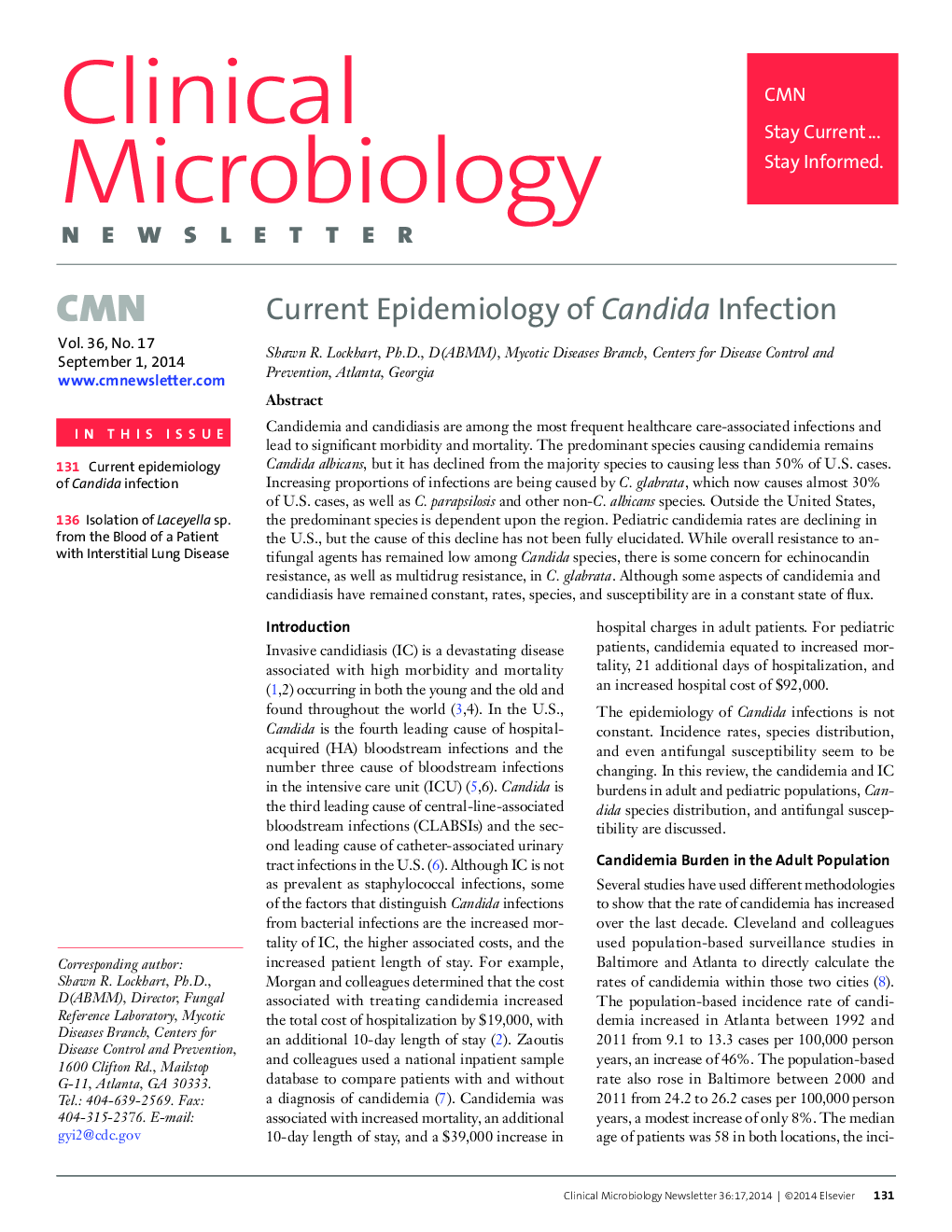| Article ID | Journal | Published Year | Pages | File Type |
|---|---|---|---|---|
| 3344830 | Clinical Microbiology Newsletter | 2014 | 6 Pages |
Candidemia and candidiasis are among the most frequent healthcare care-associated infections and lead to significant morbidity and mortality. The predominant species causing candidemia remains Candida albicans, but it has declined from the majority species to causing less than 50% of U.S. cases. Increasing proportions of infections are being caused by C. glabrata, which now causes almost 30% of U.S. cases, as well as C. parapsilosis and other non-C. albicans species. Outside the United States, the predominant species is dependent upon the region. Pediatric candidemia rates are declining in the U.S., but the cause of this decline has not been fully elucidated. While overall resistance to antifungal agents has remained low among Candida species, there is some concern for echinocandin resistance, as well as multidrug resistance, in C. glabrata. Although some aspects of candidemia and candidiasis have remained constant, rates, species, and susceptibility are in a constant state of flux.
